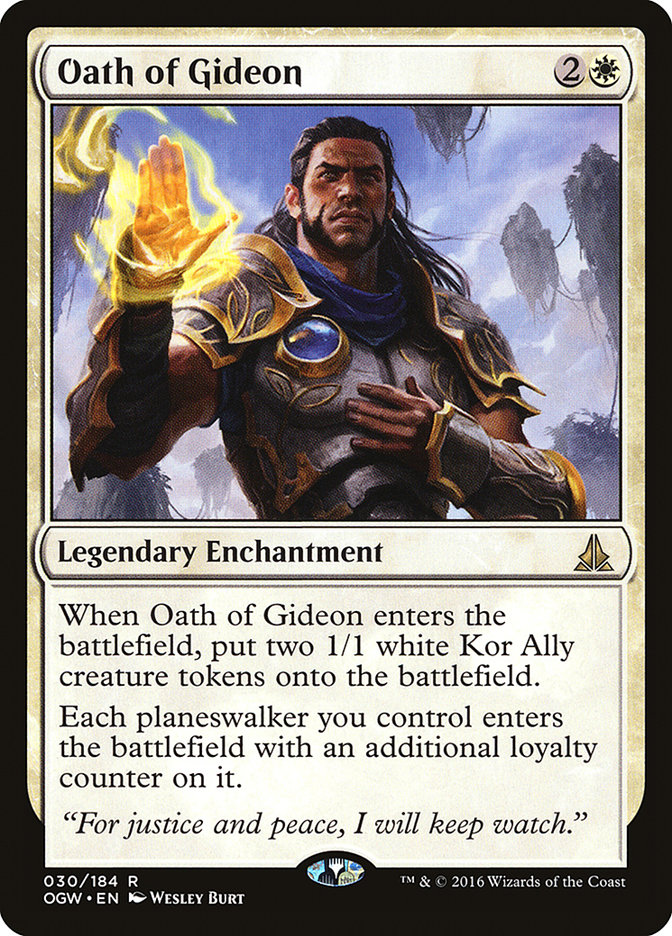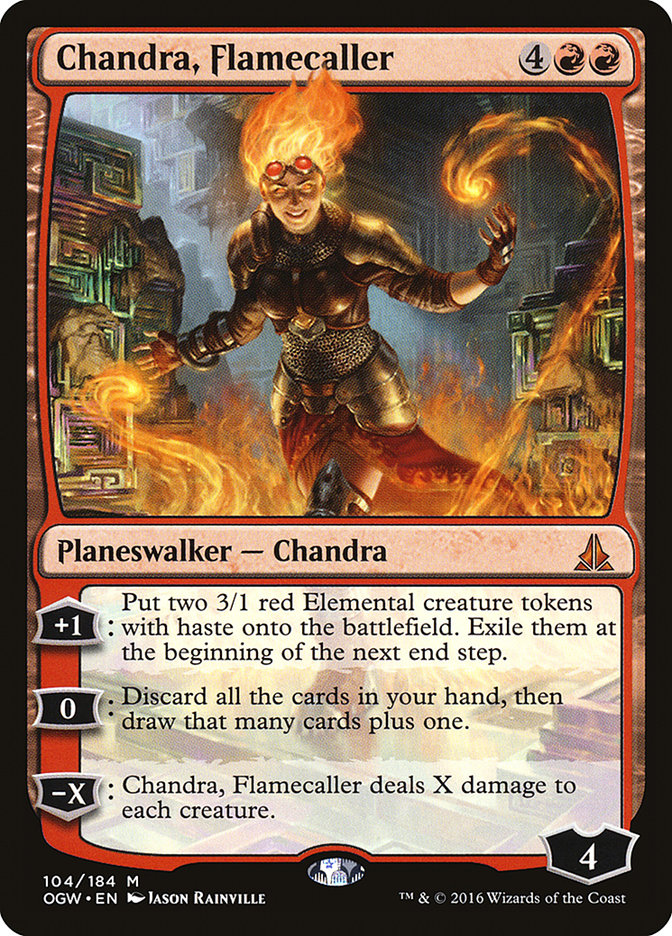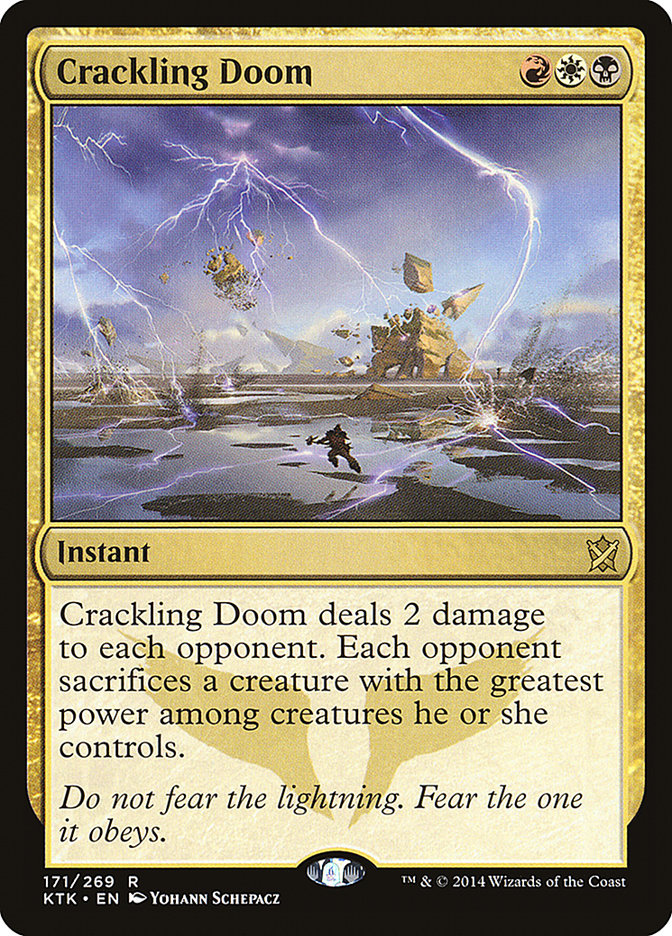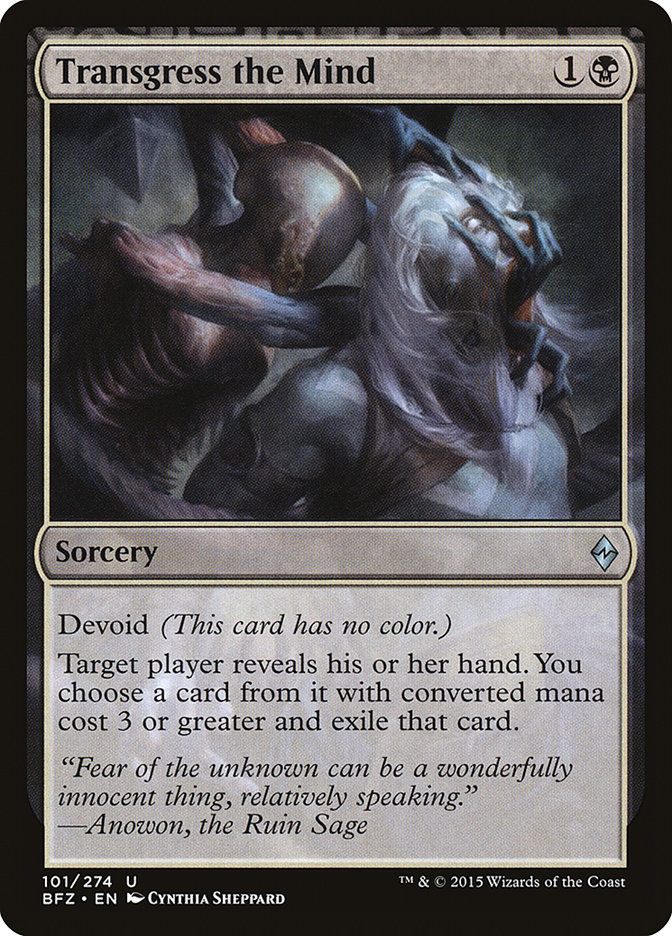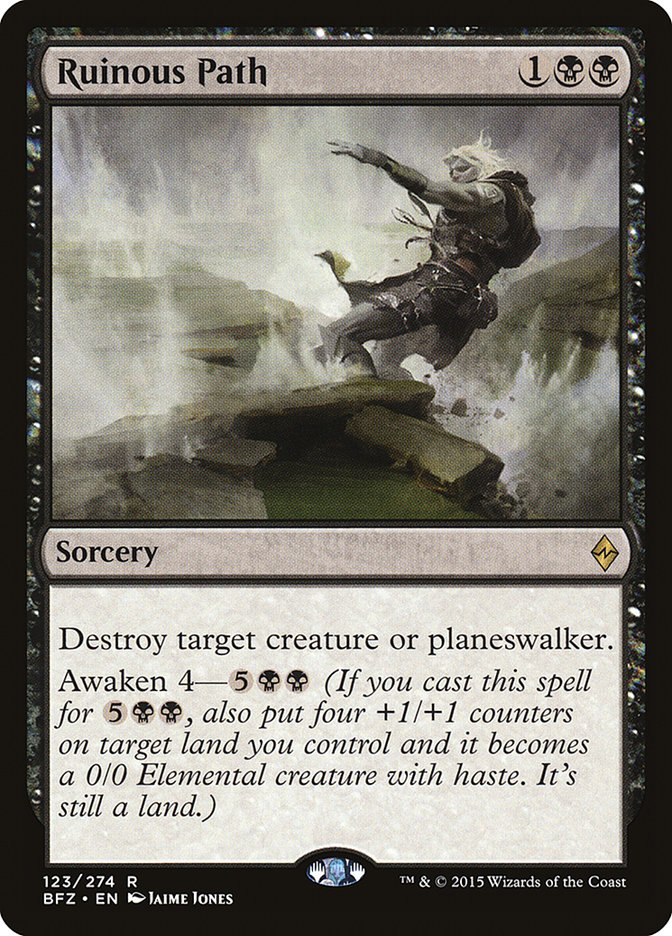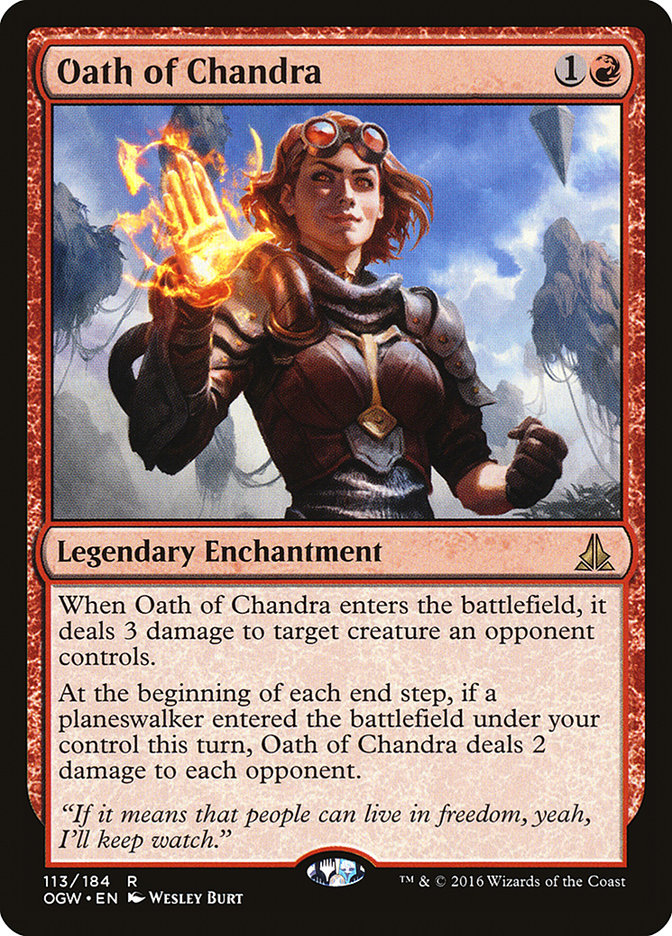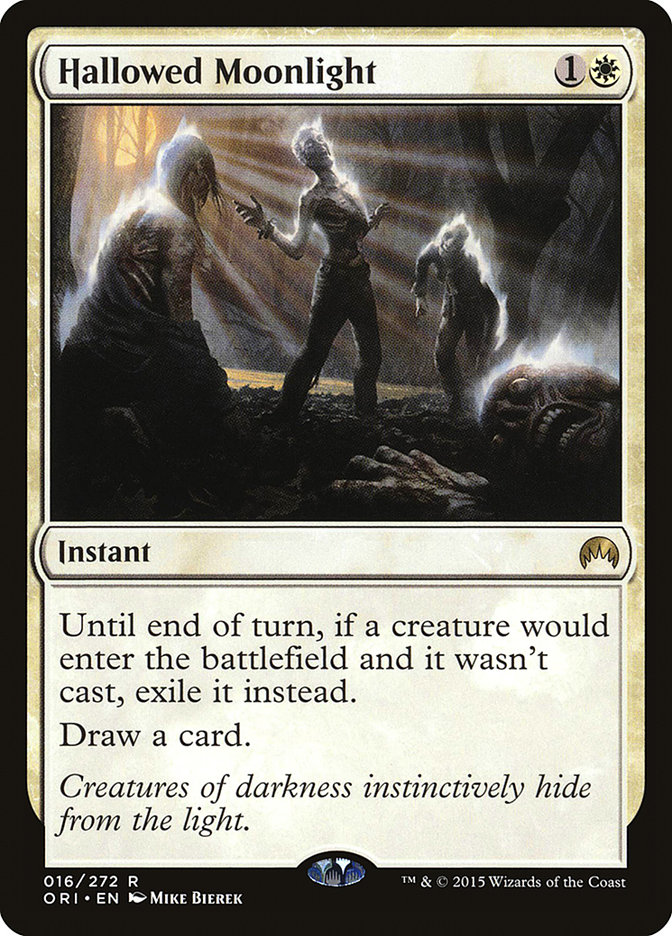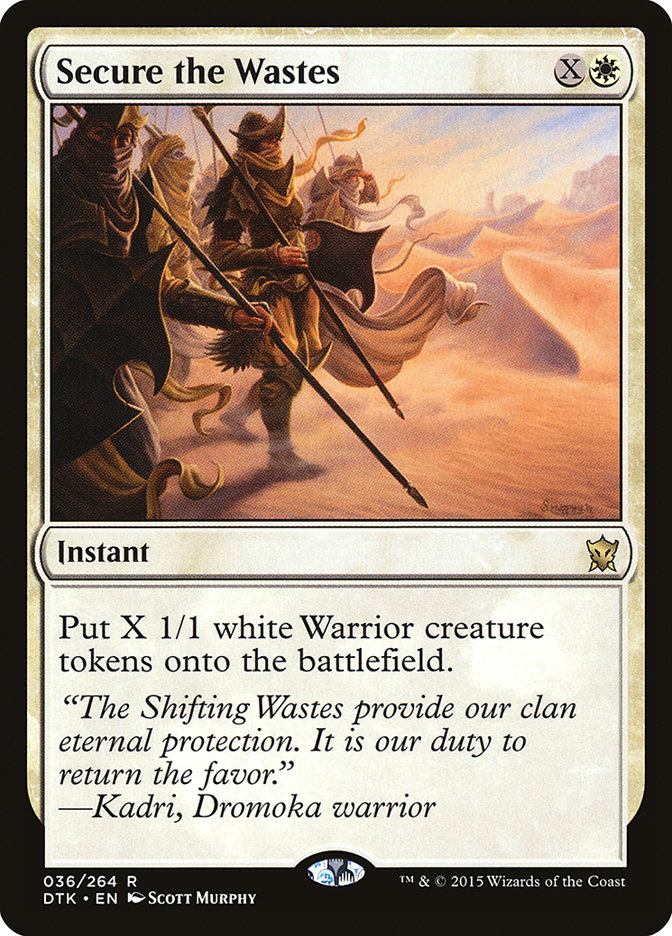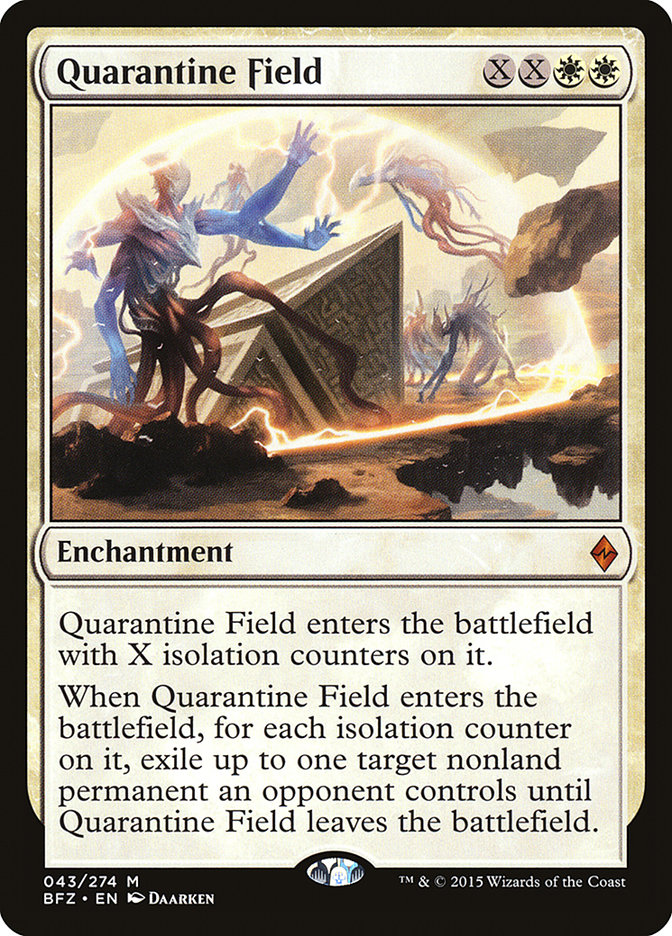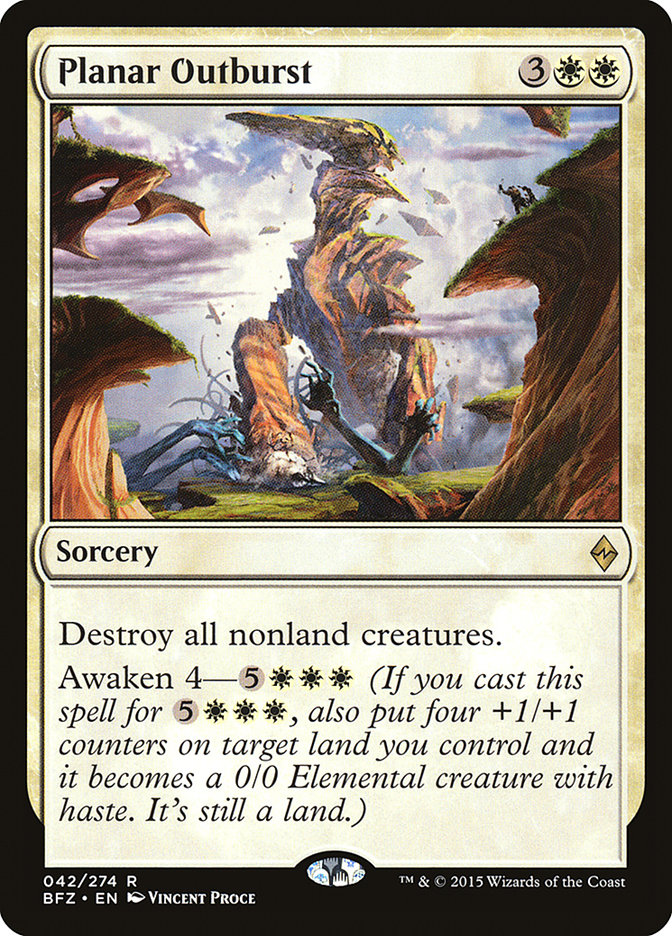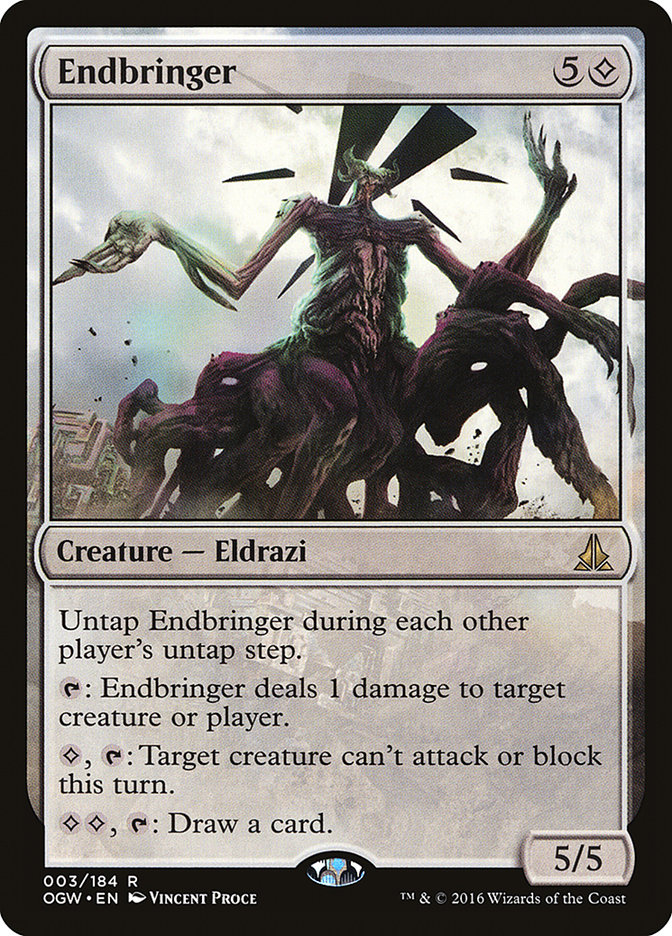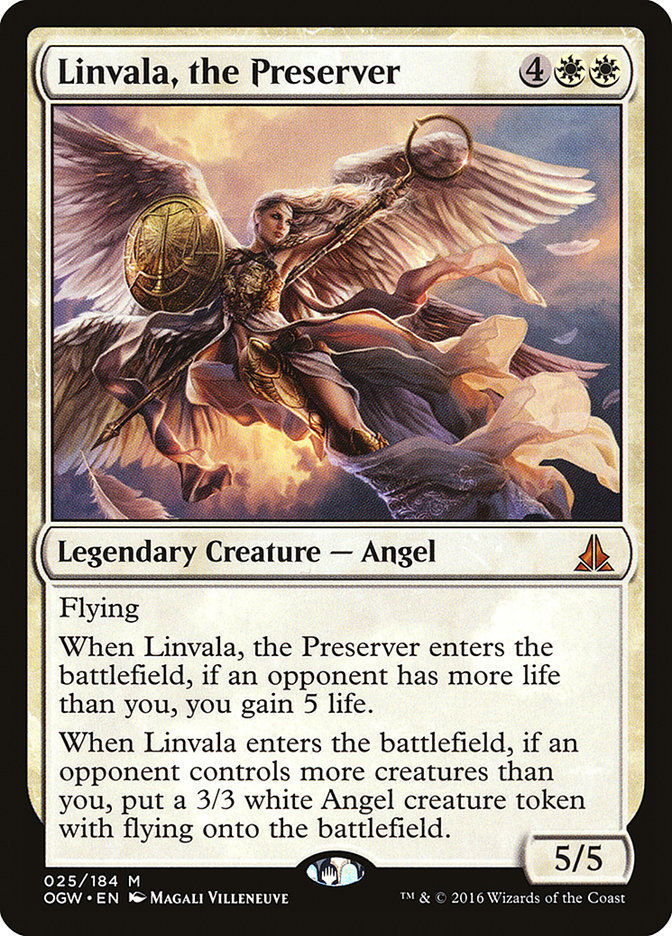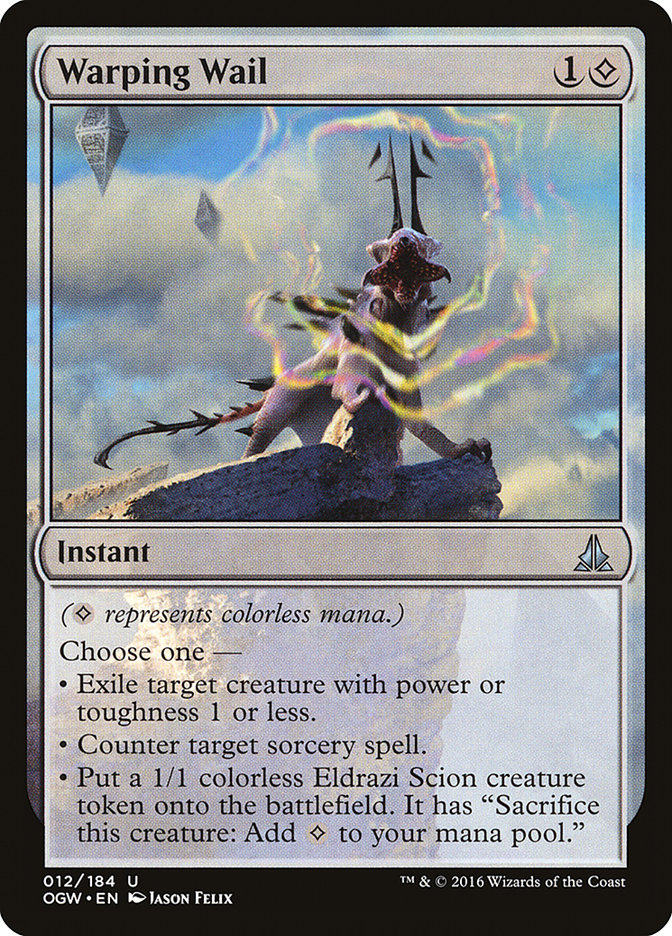As I write this, Pro Tour Oath of the Gatewatch is making all sorts of demands on my attention. With some of my favorite players flying high in the standings and a new and improved coverage plan, the viewing this weekend has been excellent. As tempted as I am to write about Death’s Shadow Zoo or the CFB/FtF Eldrazi deck, those articles will be everywhere for the next few days. I’d rather get you ready for your next FNM and maybe even an Invitational Qualifier near you.
Darn, Luis Scott-Vargas just lost to Paul Cheon.
Taking the Oath
As I mentioned in http://www.starcitygames.com/article/32275_New-Oath-Of-The-Gatewatch-Decks.html target=new>a previous article, I have been working on various planeswalker lists. I put the five-color version in that article and said I had also been tinkering with a Mardu version. As my mail has been somewhat recalcitrant in getting to me, I couldn’t go with the rainbow option this week, so I decided instead to work on the Mardu one. I didn’t realize what I was getting myself into.
I knew the core of the deck was Oath of Gideon into Gideon, Ally of Zendikar with Chandra, Flamecaller waiting in the wings. I also thought I wanted Sorin, Solemn Visitor in the deck along with Secure the Wastes, Crackling Doom, Crux of Fate, and some mix of End Hostilities, Radiant Flames, and Painful Truths. Sounds great, right?
Well, it turns out that we only have about 35 slots for spells in the deck, and we do need some targeted removal as well as potentially some discard spells. Finding the right combination proved to be difficult through the week, so on Friday morning I had a revolutionary thought: do we really need black?
This Paulo Vitor Damo da Rosa vs. Martin Muller match is insane. So many swings.
Don’t get me wrong; black is one of the strongest colors right now. Crackling Doom, Duress, Transgress the Mind, and Ruinous Path are all well-positioned, and Sorin, Solemn Visitor makes any token strategy immensely powerful. The tradeoffs are a rougher manabase and less focus on staying alive long enough to land your succession of game-winning threats.
Oath of Gideon has proven in testing to be the key card to the deck. A turn 3 Oath of Gideon really sets the deck to humming, but Oath of Gideon followed by Gideon, Ally of Zendikar on the same turn later in the game is very strong. Few decks are trying to remove your Oath (though sometimes it will be an afterthought to a Dromoka’s Command, since that card is mostly bad against us), making your planeswalkers even better when you draw them. And draw them we will.
So we’re R/W and we’re playing Oath of Gideon and planeswalkers. That seems like a reasonable guideline. We also want to stay alive early in the game. The color combination offers us plenty of ways to do so: Fiery Impulse, Gideon’s Reproach, Immolating Glare, Silkwrap, Stasis Snare, and Wild Slash spring to mind. We shouldn’t overlook Oath of Chandra, which has a pretty weak planeswalker-centric impact but a solid enters-the-battlefield trigger that can clear out a Sylvan Advocate or Mantis Rider early on. So where does that leave us?
Creatures (3)
Planeswalkers (7)
Lands (25)
Spells (25)

This deck plays strangely. It spends it early turns trying not to die, and then late in the game, when it has a couple of planeswalkers out and turns the corner, it wins in a hurry. Gideon and Chandra put out a lot of damage in short order, and all of it is resistant to sweepers. Gideon’s emblem makes Needle Spires into a real threat. The games I won were on the back of a Planar Outburst or Quarantine Field clearing the opponent’s battlefield and then a big turn of damage.
I’ll start with the weird one-ofs. Oath of Chandra proved solid, playing the role I thought it would while also getting some chip-shot damage in here and there. It even let me protect Oath of Gideon from a Dromoka’s Command, but that is a corner case. I don’t think I would want the second copy, but it did perform well.
The Seer’s Lantern was some speculation on my part. Ramping to a Chandra is pretty good, but the ability to scry every turn later in the game is the real reason to play it. Red and white are not exactly known for their card advantage engines, so we need to take what we can get. A second copy would not be the worst, but I wish it cost two instead of three.
Frank Lepore seems to have forgotten how to lose.
Hallowed Moonlight in the maindeck looks weird and might actually be weird, but with the metagame being where it is, I could not justify not playing them. Aside from the “draw a card” text that we sorely need, it is an unexpected game 1 trump to Rally decks, Collected Company decks, and even Secure the Wastes.
Hallowed Moonlight never got a chance to do its thing but it’s still likely correct. Immolating Glare did work. It was suggested that if I could squeeze Soulfire Grand Master into the deck I might be better off with Gideon’s Reproach, but with so much conditional removal in the deck already, I wanted a “kill it if it comes at you” spell that was easy to cast. Quarantine Field was great, is great, and it should be played more. Three might be too heavy, but I never hated casting it and there was at least one game where drawing it would have won me the match on the spot.
For all the derision she got early on, Chandra was incredible. Even without an Oath, she can either come down and clear up a mess or start beating down. Six damage a turn is solid, but eight is even better, and the ease with which we obtain emblems makes that very likely. Her 0 ability didn’t get used all that often, but I was seldom sad to draw a bunch of cards. Rare is the card that can close the door in a winning position, catch you up in a poor one, and help you break stalls. Chandra does that.
Her red colleague Sarkhan, the Dragonspeaker continues to be one of the more underrated cards in Standard, acting as both a removal spell and a beatdown machine. The printing of Grasp of Darkness makes him slightly worse, but a single emblem pushes him out of that range.
Potential Changes
How’d I do? Not the greatest, although some of that was down to variance. I had one screw/flood loss and another tight loss where any draw of Quarantine Field would have won the game. When I did draw a good proportion of lands and spells, though, it felt very strong. Oath of Gideon into planeswalker Gideon and his emblem is the best play the deck can make, though not always on turns 3 and 4. The dream curve of Oath-Gideon-Sarkhan-Chandra is nigh-unbeatable, which is something we should always aim to achieve when deckbuilding; if your best curve-out isn’t winning the game, why play the deck?
One suggestion was that I find room for Sigil of the Empty Throne. The deck is pretty reliant on enchantments, and Sigil of the Empty Throne has the advantage of coming down late (right before a Quarantine Field for two, for example) without needing many subsequent enchantments to have an impact. I’m not sure that impact is high enough to warrant playing a potentially dead five-drop, however.
Thought-Knot Seer is no doubt a powerful card, but in this deck it just felt okay. Exiling an opposing card in hand without needing black is a great effect before we start running out planeswalkers, and hitting for four is rarely a bad thing, but going forward, I think this is a flex slot. Outpost Siege, Retreat to Emeria, Profound Journey, and even Myth Realized might work in this spot. That would also allow us to cut the Wastes and Evolving Wilds. The Battlefield Forges could even become Wind-Scarred Crags to give us a little life bump.
Gut Shot off the top!
Four copies of Planar Outburst may have been too many, but the replacement is not obvious. We’re almost always playing from behind for the first few turns, and Outburst is really the best way to catch up. We also have the marginal upside of making Needle Spires really, really big. I’m open to suggestions here, but it’s hard to imagine a better card for this spot.
The sideboard, however, can be substantially improved. Although I am a big fan of Emeria Shepherd, and even though Endbringer didn’t get a chance to do anything but eat a removal spell, I am probably just the worst for not playing two copies of Linvala, the Preserver in the sideboard. Decks like Abzan Aggro are going to side out a lot of their spot removal, making Linvala better on multiple fronts. Also, that artwork is incredible. You should see the foil! Needing six mana to get to the big bomb is a little rough, but once you do get there, the impact is immediate and significant. A second Seer’s Lantern in the maindeck would reduce that fear greatly.
A deck with Ruination Guide, Vile Aggregate, and Eldrazi Skyspawner is 9-0 in Modern. We’re done here.
The other weird choice was Warping Wail. It is good against Explosive Vegetation and the omnipresent Jace, Vryn’s Prodigy menace, but we already have plenty of answers for Jace. We might be better off with some sort of Threaten effect here to help against the ramp decks, but that feels very odd in a control deck.
I was never able to activate Sea Gate Wreckage, even in the game where I got a Sarkhan, the Dragonspeaker emblem. Foundry of the Consuls or Spawning Bed might be a better option here, but Blighted Gorge might also be worth a look. The aggro package in the sideboard worked perfectly, however. Wall of Resurgence does much work against Atarka Red, but in tandem with Needle Spires, it makes for some very scary threats as well. It might even be worthy of a maindeck slot, especially if the metagame speeds up.
Drowner of Hope off the top! This Pro Tour, man. This Pro Tour.
All in all, the most surprising thing about this deck was the way it switches gears. The Oath of Gideon draws are so much better than the ones without the card that we might want a fourth copy, and nowhere is this more evident than the games where you have Oath of Gideon with Gideon, Ally of Zendikar as the follow-up, wipe the battlefield the next turn, and play a Chandra, Flamecaller. Fourteen damage out of nowhere is something even the Aetherling control decks of Standards past couldn’t pull off, and it’s not even the best we can do.
The one big weakness I have seen is that we are hard-pressed to ever beat decks with a lot of counterspells. We’re very low on threats, making things like Negate and Disdainful Stroke amazing against us. Our creature-lands trade with Shambling Vents, Lumbering Falls, and Wandering Fumarole unless we can get an emblem. Potential solutions would see us running Foundry of the Consuls and sideboarding Monastery Mentor, but even that might not be enough. If your local metagame is heavy on control, be wary of this.
If you’re looking for a solid deck to take to a store-level event, I am comfortable saying you will not regret taking R/W Control with you. With a few tweaks, it might even be strong enough to go further. At the very least you will have a load of fun.
As always, thanks for stopping by and until next time…Brew On!


